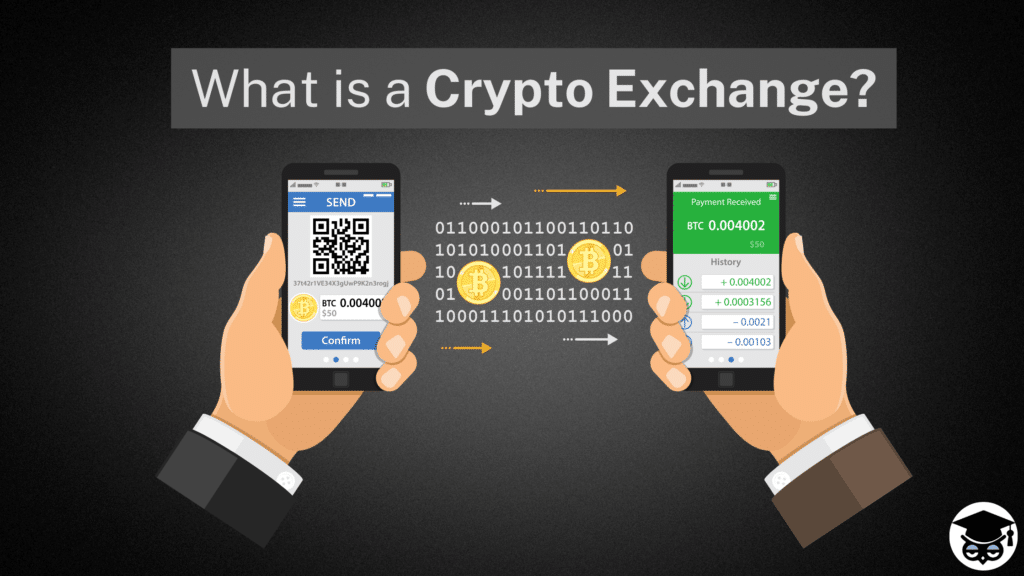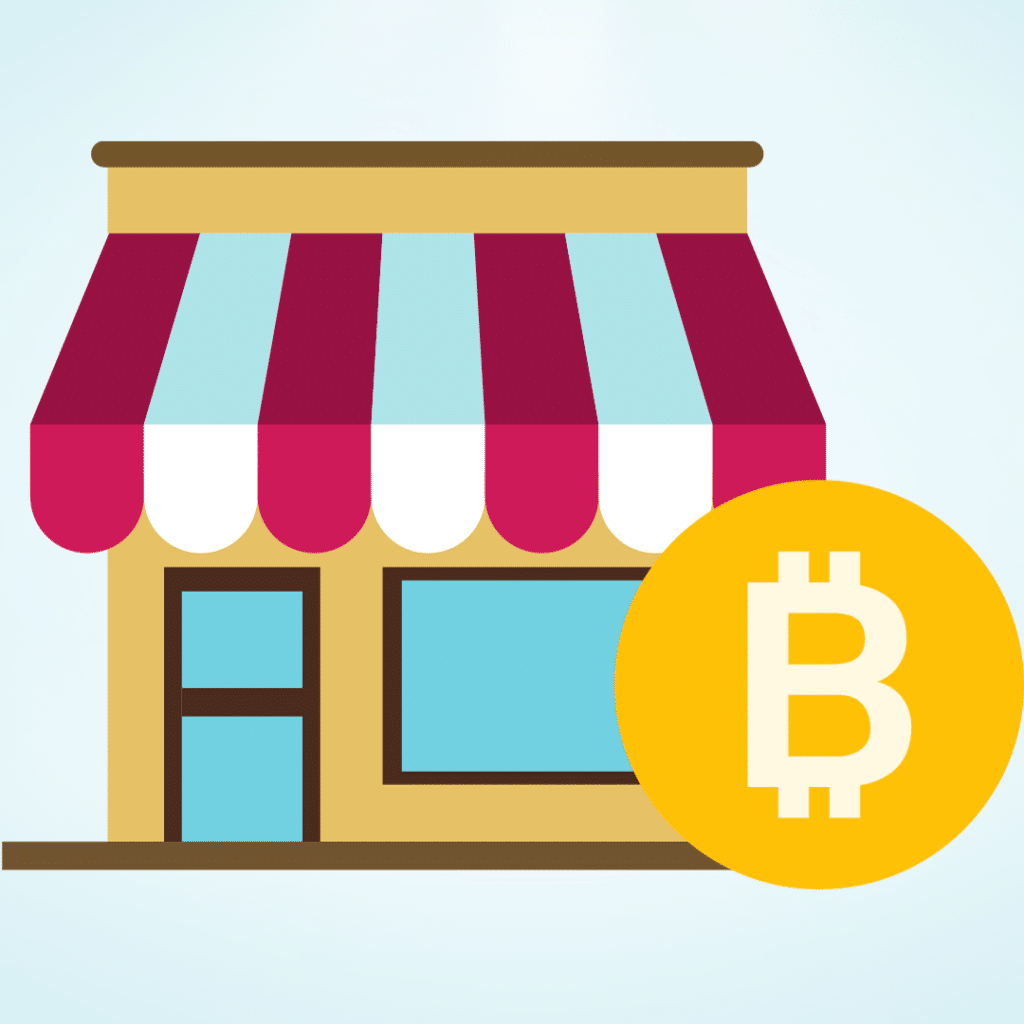What is a Cryptocurrency Exchange?
A cryptocurrency exchange is an online platform or website that lets you exchange (buy, sell, and trade) cryptocurrency.
There are two types of cryptocurrency exchange; centralized exchanges are owned and managed by a private company and must adhere to specific regulations and laws. Decentralized exchanges are built on the blockchain and allow users to exchange cryptocurrency with a cryptocurrency wallet.
The Long Definition
A cryptocurrency exchange is an online place where people can buy, sell, or trade cryptocurrency.
Cryptocurrency exchanges can be centralized or decentralized. Understanding the difference helps you decide which may be best for you.

Centralized cryptocurrency exchanges (CEX)
A centralized cryptocurrency exchange (CEX) is controlled by the company that owns it. It lets you buy and sell crypto with fiat currency, as well as exchange cryptocurrencies for one another. CEXs also utilize custodial wallets, which means that they have complete power and control over any cryptocurrency on their platform. They can freeze or block access to anyone’s account if they so choose, and if the company itself goes bankrupt, users may lose access to their cryptocurrency altogether.
CEXs such as Coinbase or Kraken, have control over their operation and set their own rules. In some ways, they are like banks because they are the middlemen between users and can earn profits from the fees they charge.
Examples include Binance, Gemini, Coinbase, and Kraken.
Decentralized cryptocurrency exchanges (DEX)
A decentralized cryptocurrency exchange (DEX) is a platform built on a blockchain that allows its users to exchange cryptocurrency and cryptocurrency tokens. Unlike a CEX, a DEX is not owned by a company. Instead, it depends on its users to deposit cryptocurrency into the platform in exchange for earning fees and other rewards. Users can then withdraw their cryptocurrency and their earned rewards at any time.
Decentralized exchanges can do this through the use of smart contracts. Smart contracts are self-executing software programs that exist on blockchains and can do a variety of things. Since they use the blockchain, DEXs rely on the use of non-custodial cryptocurrency wallets. This means that users never lose control of their cryptocurrency since they completely own and manage their wallets instead of relying on a company.
Examples include Uniswap, SushiSwap, PancakeSwap, and SpookySwap.

The History of Cryptocurrency Exchanges
The Bitcoin blockchain launched in 2009 and it was unlike anything the world had seen before. Using distributed ledger technology, it was designed to power a payment system with the digital currency bitcoin (BTC) at the heart of it. This system would be outside government control, transparent, and allow users to remain anonymous.
But getting Bitcoin wasn’t easy. You either had to mine it yourself or have it sent to you through a peer-to-peer (P2P) trade with someone who already owned Bitcoin.
Mining in 2009 wasn’t as demanding as it is today. You could even do it on your personal computer. However, it required a significant level of technical knowledge. And given that bitcoin was worth nothing back then, few people took this route.
As for P2P trades, these happened on forums like Bitcointalk. They worked to a degree but were quite risky. You had to trust that the other person would hold their end of the bargain. And more often than not, people didn’t.
Because of this, there was a strong desire for different ways to get Bitcoin. This would lead to the creation of the first crypto exchange. And, in February 2010, Bitcoin Market was launched.
Early Cryptocurrency Exchanges
Bitcoin Market allowed buyers to send money to sellers via PayPal. Bitcoin Market held the bitcoin in escrow until the seller received their money. Unfortunately, a few months later PayPal withdrew payment support for the platform. This signaled the end of the first crypto exchange.
The next exchange to emerge was Mt. Gox. An interesting fact about the exchange is that they built it on a recycled website. The website was once a platform where fans of the card game Magic: The Gathering, traded cards.
When the website was converted into an exchange, its full name was “Magic: The Gathering Online Exchange,” or Mt. Gox.
Mt. Gox became a Bitcoin exchange in 2010 and featured a little more functionality than Bitcoin Market. For instance, users could see the daily highest and lowest values of Bitcoin and the trading volume.

By 2013, it was handling 70% of global bitcoin transactions. Other exchanges had also emerged. These included the likes of Bitomat, MyBitcoin, Liberty Reserve, Coinbase, Kraken, and TradeHill.
All these were custodial exchanges, that is, they held the crypto on behalf of the user. While doing so meant more convenience for the user, it also made them an obvious target for hackers. Furthermore, security wasn’t as high a priority, so exchange hacks were a common occurrence.
This is what ultimately led to the downfall of Mt. Gox and many other early exchanges.
In 2011, Mt. Gox lost thousands of Bitcoins to hackers. Fortunately, it survived and continued to thrive. But this didn’t last long. The killing blow would come in 2014 when reports emerged that the exchange had lost more than 800,000 bitcoins to hacks over the years. These were worth $460 million at the time.
People lost a lot of crypto in this and other exchange hacks. This inspired the mantra “not your keys, not your coins,” meaning that unless you keep your cryptocurrency in your own dedicated wallet (non-custodial), you risk losing your crypto.
The Rise of Altcoins
The crypto space took a beating when Mt. Gox collapsed. Overall though, Bitcoin has been a success. It made more people believe in cryptocurrencies and inspired the creation of new digital currencies, better known as altcoins.
Now, it was possible to exchange fiat for something other than bitcoin. It was also possible to exchange Bitcoin for other currencies. Support for different cryptocurrencies became a must-have feature for crypto exchanges.
But, the number of altcoins available on their platforms was limited. Binance saw this as an opportunity and launched in 2017 with better support for altcoins. This attracted a lot of customers to the platforms, setting it on a path to becoming the largest crypto exchange to date.

Increasing Security and Regulation
The failure of Mt. Gox was a lesson for other exchanges. So after 2014, security became a crucial feature for exchanges. There have, of course, been more exchange hacks since then, but better security has ensured that none have been as impactful as Mt. Gox.
Regulators have also become more involved. Today, cryptocurrency exchanges must follow several laws such as Anti-Money Laundering (AML), Counter-Terrorism Financing (CTF), and Know Your Customer (KYC). In many ways, cryptocurrency exchanges are being treated like traditional financial institutions.
Want to join the Dypto journey? Follow our socials!